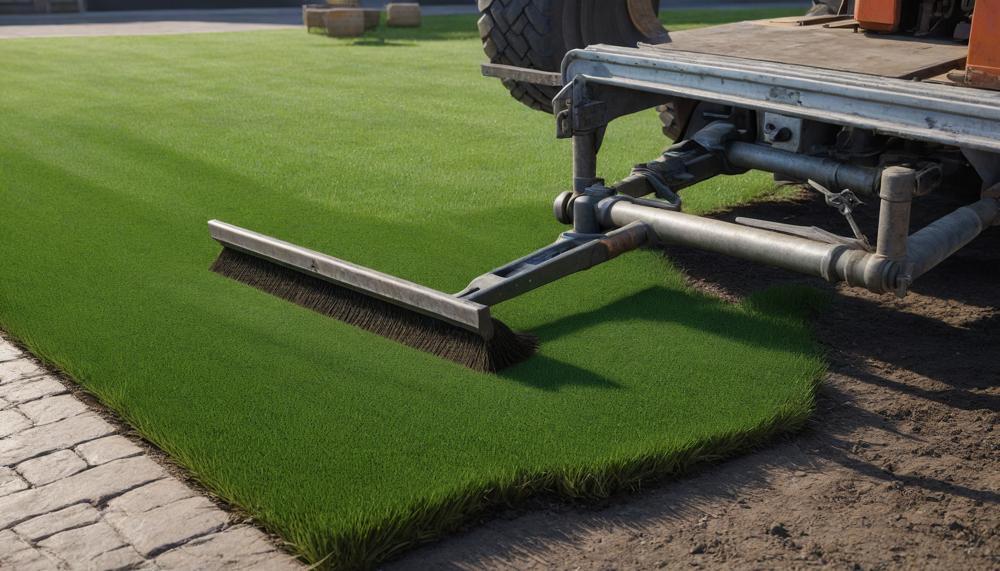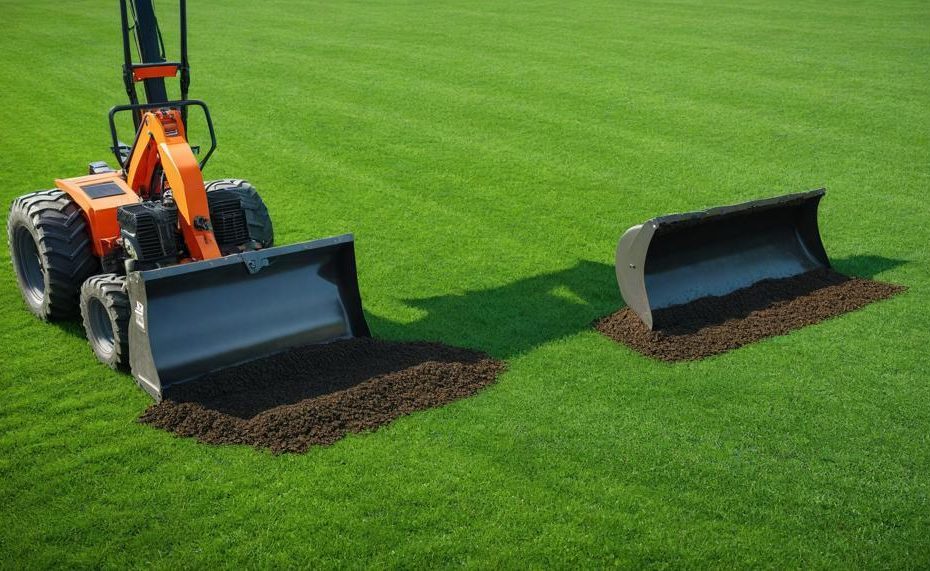Disposing of sod properly involves more than just tossing it away. Proper sod disposal ensures a healthier garden and a better environment. So, how should you properly dispose of sod? The best approach is to use pitchforks, rakes, or shovels to gather the removed sod and transport it to a suitable disposal site, such as a local landfill. In Central Florida, the cost is approximately $35 per ton.
Why is this important? Proper sod disposal prevents issues like root regrowth and soil disruption, promoting a healthier lawn. Plus, it’s environmentally friendly and can even save you money in the long run by ensuring your new sod takes root effectively.
Here are the key takeaways:
- Use the right tools: Pitchforks, rakes, and shovels are essential for gathering and transporting sod.
- Know your disposal site: Local landfills usually accept sod, and the cost in Central Florida is around $35 per ton.
- Consider professional help: Hiring experts can save you time and physical effort.
- Plan ahead: Contact companies like Ground Source for quotes and services to transform your yard seamlessly.
Understanding the impact of proper sod disposal can lead to a thriving lawn and a more beautiful outdoor space. Ready to roll up your sleeves and get started? Your dream yard is just a few steps away.
Contents
First, Why It’s Important to Remove Old Sod
Removing old sod is pivotal for ensuring the success and longevity of new sod. Here’s why:
Reasons to Remove Old Sod
- Facilitates Root Penetration:
- New sod needs direct contact with the soil to establish its roots effectively. Old sod acts as a barrier, preventing roots from reaching the soil and absorbing essential nutrients and water. This can lead to weak growth or even death of the new sod.
- Prevents Uneven Growth:
- If the old sod isn’t removed, the new sod may not sit evenly, causing bumps and an uneven lawn. This irregularity not only affects the lawn’s aesthetics but can also complicate mowing and maintenance.
- Eliminates Competition for Resources:
- Old sod, with its existing roots and possible weeds, competes with new sod for water and nutrients. This competition can hinder the growth and health of the new sod, leading to sparse or patchy grass coverage.
- Reduces Disease and Pest Risks:
- Old sod can harbour pests and diseases that can easily transfer to the new sod. By removing it, you minimise these risks, giving the new sod a healthier start.
- Enhances Soil Preparation:
- Removing old sod allows for proper soil preparation, including levelling, aerating, and amending the soil. These steps are crucial for creating an optimal growing environment for the new sod.
Steps to Properly Remove and Dispose of Old Sod
- Cut and Lift:
- Use a sod cutter to slice through the old sod at the roots. This machine makes it easier to lift and roll up the sod for disposal.
- Dispose of Appropriately:
- Transport the old sod to a landfill or composting facility. Depending on your location, costs can vary. In Central Florida, for example, disposing of sod at the landfill costs about $35 per ton.
- Hire Professionals:
- For a hassle-free experience, consider hiring professionals. Companies like Ground Source offer expert services in sod removal and installation, ensuring the job is done efficiently and correctly.
Visual Representation
| Reason | Description | Outcome |
| Facilitates Root Penetration | Old sod blocks new sod roots from reaching the soil. | Better root establishment and growth. |
| Prevents Uneven Growth | Old sod causes bumps and uneven surfaces. | Even and level lawn. |
| Eliminates Competition | Old sod competes with new sod for resources. | Healthier and fuller new sod growth. |
| Reduces Disease/Pest Risks | Old sod may harbour pests and diseases. | Lower risk of infection or infestation. |
| Enhances Soil Preparation | Allows for proper levelling and soil amendments. | Optimal soil conditions for new sod. |
If You’re Doing It Yourself…

Disposing of sod on your own requires careful planning and execution. Here are the key steps to ensure you handle it efficiently and effectively:
Gather Necessary Tools
Ensure you have the right tools, such as:
- Shovels
- Pitchforks
- Rakes
- Wheelbarrows
Plan the Disposal Method
Consider the various disposal options:
- Dumpster Rental: Convenient but may incur additional costs.
- Landfill Drop-off: Check local regulations and fees.
- Composting: Ideal for eco-friendly disposal if you have the space.
Remove the Sod
- Cut the Sod: Use a sod cutter to slice through the grass and roots.
- Lift the Sod: Employ shovels or pitchforks to lift and roll the sod for easier handling.
Transport the Sod
- Wheelbarrow Use: Transport smaller loads to the disposal area.
- Truck or Trailer: For larger amounts, a vehicle may be necessary.
Dispose of the Sod
- Dump in Dumpster: Use pitchforks and rakes to toss the sod into the rented dumpster.
- Deliver to Landfill: Transport the sod to the landfill, being mindful of weight limits and costs.
- Compost: Layer the sod in your compost pile, ensuring it’s adequately covered to decompose properly.
Clean Up
- Debris Management: Rake the area to gather any remaining roots or grass.
- Soil Preparation: Till the soil to prepare it for new sod or other landscaping.
Tips for Efficient Sod Disposal
- Estimate Debris Volume: Be prepared for more debris than anticipated.
- Check Local Regulations: Ensure compliance with local disposal rules.
- Consider Professional Help: If the task seems overwhelming, hiring professionals might be a cost-effective solution.
Cost Considerations
Disposal costs can vary, with an average of $35 per ton at landfills in some regions. Renting a dumpster or paying for landfill services should be factored into your budget.
| Step | Description | Tools/Notes |
| Gather Tools | Ensure you have shovels, pitchforks, rakes, and wheelbarrows. | Essential for efficient removal and transport |
| Plan Disposal | Choose between dumpster rental, landfill drop-off, or composting. | Consider costs and environmental impact |
| Remove Sod | Cut and lift the sod using appropriate tools. | Sod cutter, shovels, pitchforks |
| Transport Sod | Use a wheelbarrow or vehicle to move the sod to disposal site. | Wheelbarrow, truck, or trailer |
| Dispose of Sod | Dump in a dumpster, deliver to landfill, or compost. | Check local regulations and fees |
| Clean Up | Remove remaining debris and prepare soil. | Rake, tiller |
Next Up: Where to Dispose of Sod?
Disposing of sod in an environmentally-friendly manner is crucial to maintaining a sustainable garden. Here are some practical and eco-conscious options:
- Composting:
- Benefits: Composting sod is an excellent way to recycle organic matter back into the soil, enriching it with nutrients.
- Considerations: Ensure the sod is free from pesticides or herbicides to avoid contaminating your compost.
- Reusing or Donating:
- Benefits: If the sod is in good condition, consider reusing it in other areas of your garden or donating it to neighbors or community gardens.
- Considerations: This helps reduce waste and supports local green spaces.
- Green Waste Facilities:
- Benefits: Many municipalities have green waste facilities where sod can be taken for composting or reuse.
- Considerations: Check local regulations and availability of such facilities in your area.
- Professional Landscaping Services:
- Benefits: Hiring professional landscapers can ensure that sod is disposed of correctly, often utilizing their connections with green waste facilities.
- Considerations: This option might incur additional costs but provides a hassle-free solution.
- Local Initiatives:
- Benefits: Some areas have specific programs for the eco-friendly disposal of yard waste, including sod.
- Considerations: Contact local environmental groups or municipal services to learn about available options.
Conclusion
Disposing of old sod correctly is essential for fostering a thriving, green yard while promoting environmental health. When faced with the challenge of sod removal, using the right tools—pitchforks, rakes, and shovels—is your first step. These tools help efficiently gather and transport the sod, whether you’re headed to a local landfill, where disposal costs average $35 per ton in Central Florida, or to a composting site for a more eco-friendly option.
Proper sod disposal is crucial to prevent issues such as regrowth and soil disruption, ensuring your new sod establishes strong, healthy roots. It also avoids unnecessary competition for nutrients between old and new sod layers, which can impair the growth of your fresh lawn.
Consider professional services if the task seems overwhelming. Experts can handle the heavy lifting and ensure that disposal aligns with best practices, saving you time and effort.
By managing sod disposal thoughtfully, you lay the groundwork for a lush, vibrant lawn that not only enhances your outdoor space but also supports a healthier environment.





